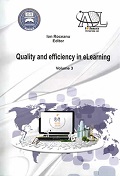KINEMATIC ASPECTS OF DIRECT PUNCH CROSS AND JAB APPLIED IN SEMI-CONTACT
KINEMATIC ASPECTS OF DIRECT PUNCH CROSS AND JAB APPLIED IN SEMI-CONTACT
Author(s): Dan Deliu, Irina BăiţelSubject(s): Education
Published by: Carol I National Defence University Publishing House
Keywords: direct punch; cross; jab; semi-contact; cinematics; inertial navigation; MOVEN
Summary/Abstract: In this study we aimed to determine and compare some characteristics of the cinematic direct punch jab and cross applied in semi-contact system. Kinematic data acquisition was performed using inertial navigation technology embedded in the MOVEN equipment from Xsens, Netherlands. The equipment was mounted on a topic of world, national and international champion of kick boxing and Thai boxing heavyweight senior.Series of shots were recorded using the MVN equipment and dedicated software and a video camera (120 f /s). Data collected using MOVEN system were converted and processed, yielding information about the velocity and acceleration of body segments (this information is presented for fist, elbow, shoulder and right hip in executions with right arm). Were obtained fist velocity between 6.17 and 7.29 m /s for jab applied in semi-contact style and fist velocity in the range from 6.95 to 7.93 m /s semi-contact cross. Velocity variation in time curves presents two main peacks whose height and scale depend on the application coup – semi-contact, full contact and striking variant (cross, jab). These peacks reffer to race of the fistto the target and return. The path to the target is much faster than to recovery in the original position.Compared with the values obtained for the same techniques, performed by the same athlete in non-contact system, without completion, without reaching any material target (maximum of 6.75 m /s for jab and 7.59 m /s for cross) semi-contact applied punches speeds had higher peak values, demonstrating that the effect of target (highlighted by another authors) exists and must be used in specific speed training.
Journal: Conference proceedings of »eLearning and Software for Education« (eLSE)
- Issue Year: 9/2013
- Issue No: 03
- Page Range: 97-101
- Page Count: 5
- Language: English

